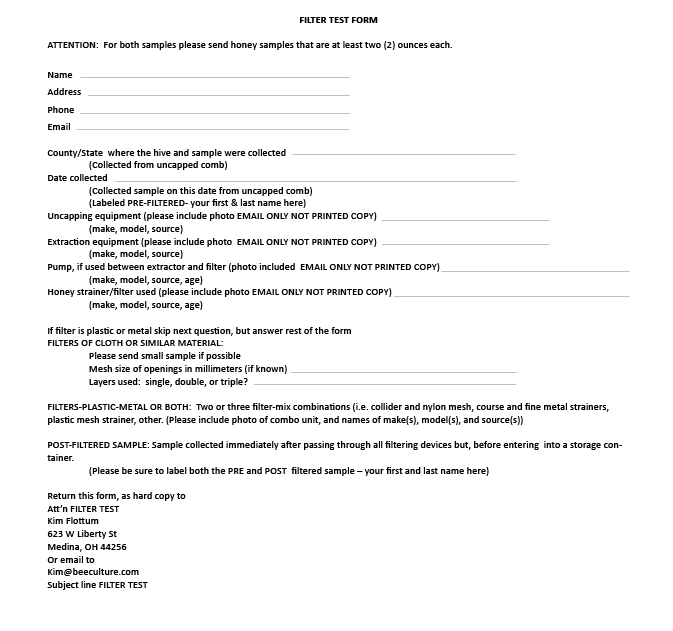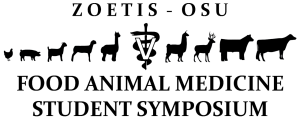by Vaughn Bryant
Pollen In Honey
What is the best way to filter honey and not lose any of the pollen? I wish I knew the right answer, but I don’t. I have been conducting pollen tests on hundreds of honey samples every year for over a decade. I find that some samples appear to contain all of the pollen, some contain part of the pollen, and some contain none of the pollen. So why is the pollen important? First, the pollen is one of the best clues that tell us what nectar sources the bees were collecting to make the honey. Second, the pollen provides a good geographical indication of where the honey was produced. Third, the pollen does provide some nutritional value to those who eat the honey. Fourth, if a honey sample is blended with more than one type of honey or if the honey has been adulterated by adding other liquids such as rice syrup, high fructose corn syrup, or even water, the pollen ratios will often identify that the honey has been altered or blended.
Pollen is an important component in honey. It is estimated that each year over 91 million tons of illegal honey enters the U.S. and the pollen in that honey can often identify the illegal sources. Much of that illegal honey has been transshipped from one country to a second country, which then exports the honey to the U.S. as being a domestically-produced product of the second country. Other honey is sold on the world market to importers who are told the honey is from some specific location and that the honey was produced from some specific nectar source; frequently, both the location and nectar source information is misrepresented either by accident or on purpose. Pollen in honey also protects the consumer by being able to confirm what is represented on the label
Domestically in the U.S. certain honey types command premium prices because they are highly prized by consumers. Fireweed honey from Alaska, tupelo honey and orange blossom honey from Florida, sourwood honey from North Carolina and Virginia, sage honey from California, mesquite and huisache honey from Texas, buckwheat honey from New York, and many other premium types are sold from roadside stands, at farmer’s markets, and in some local grocery stores. Unfortunately, many of those types, which I have tested, contain no pollen because they were over-filtered. Therefore, it is difficult to authenticate that those products are actually what is inside the jar, as claimed on the label. This also makes the consumer less willing to pay higher prices for premium honey types that cannot be verified as being accurate.
Many local beekeepers send samples of their honey to me for testing because they are either curious what nectar sources it contains, or they want to be sure to label their honey accurately so their customers can be assured of the quality as stated on the label. Unfortunately, many of those samples that I test do not contain pollen because the pollen was accidently removed by some filtering technique. Many times when I contact the beekeeper who sent me the honey they are shocked to discover they accidently removed some, most, or all of the pollen from their honey.
Filters
There are many types of commercial filters that are sold to beekeepers and those filters are then used to remove unwanted dirt, bee parts, wax, and other impurities from extracted honey. Many of the beekeepers want to remove those impurities from their honey but they do not want to remove the pollen. Unfortunately, the filtering techniques many of these people are using does remove the pollen. Many, many times beekeepers ask me “What is the best way to filter my honey and not remove the pollen?” Frankly, I don’t know what to tell them because I don’t know what is the best method to use. I mention that pollen grains are smaller than 200 micrometers and thus a filter with openings larger than that should not remove pollen. However, some people tell me that is what they are using, but still their honey samples have lost the pollen. Some people say they use cheesecloth, some say they are using various types of screens, using various types of open weave fabrics, or sometimes they say they use the screens often used for flour sifting. Apparently, some of these people must be doing something else to their honey samples or their filters are getting clogged and trap pollen because the end result is a loss of pollen.
HELP!
We need your help in searching for the best and least expensive honey filtering technique that will remove unwanted impurities but will not remove the pollen. Our problem is that we don’t know what that best technique might be. This is where you, the beekeepers, can help us solve this problem.
What we propose to do is to ask a number of beekeepers, but no more than about 20 or so individuals, to tell us exactly how they filter their honey from the time it leaves the hive until they bottle it for sale. Along with that information we will need a small amount (about 25 grams) of honey that comes directly from the hive before anything else is done to it. We will also need another sample of that same honey after it is filtered and when it is ready for marketing. The comparison of the pollen types and the percentages of each pollen type in the samples before and after the filtering process will help determine which techniques are the best suited for removing the impurities in honey, but do not remove any of the pollen from the processed honey.
We realize that there may be hundreds of people who might be willing to help in this experiment, which is wonderful. However, it is expensive and time-consuming to do these pollen tests and thus we must limit the number to 20 or fewer specific types of filtering techniques. Therefore, what we propose is that for those individuals who are interested in helping, we would like them to send an outline of exactly how they filter their honey and what specific filtering equipment they use. The type of information we will need includes things such as: is it a gravity filter, a centrifugal filter, what is the opening size of the filtering screen or cloth being used, is one layer or multi-layers of material being used, is the honey heated to speed filtering, is the filtering screen frequently cleared of debris, and any other factor that may affect the process.
From these initial responses we will select a number of different filtering types and different techniques in an effort to test a diverse group of techniques in hopes that one or more of them will prove to be the ideal method for filtering honey. For those selected individuals, I will respond with a positive request for them to please collect the before and after honey samples, please provide detailed information of their filtering, include photos of the entire process, identifying make and model of uncapper, extractor, filter, piping if any, pumps and storage tanks. If you are unsure, at least be able to provide a photo of each step. If using material providing a sample would be ideal and also ship me the samples for analysis. If you are using a commercially purchased filter – any size, make, model – please include where purchased, any information included when purchased and when you purchased it. As a reward for this effort, we will provide each selected participant with an analysis of what I find in their sample and I will also identify the nectar sources in their sample, provided the filtering technique that was used did not remove the pollen.
After the study is completed, the results will be reported in a future issue of Bee Culture Magazine.
Thank you, Vaughn.









